A Floridian at Standing Rock
UPDATE: Today, February 7, 2017, the Trump Administration's Army Corps of Engineers cancelled the Environmental Impact Statement (EIS) started under the Obama Administration and announced it would grant an easement to complete the Dakota Access Pipeline. Sierra Club is calling for people to send a message to the Army Corps demanding that the EIS be completed. Also continue to submit comments on the EIS scope to Mr. Gib Owen at gib.a.owen.civ@mail.mil.
My Time at Standing Rock
Oceti Sakowin began as an overflow camp for other nearby camps that formed early last spring. Named for the seven bands that historically made up the Great Sioux Nation, it served as the heart of the resistance for the Standing Rock Sioux Tribe which has been protecting the waters of the Missouri River as well as their sacred burial sites from the Dakota Access Pipeline (DAPL).
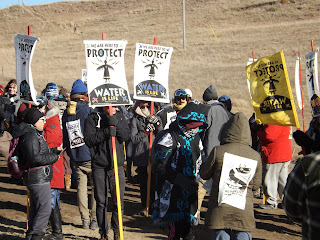
Photo by Julie Ferreira
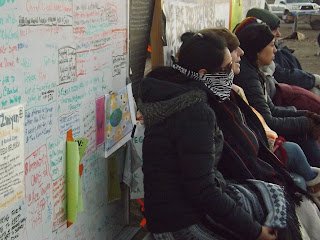
Photo by Julie Ferreira
I arrived at the encampment just as the sun had set. Once out of the car, there was a sense of celebration and prayer in the air and I found myself surrounded by the aroma of burning cedar and sage as it mixed with the scent of glowing campfires. All of this was enhanced by the sound of native drums, song and ceremony. The landscape was covered with tipi's, tents of all sizes, makeshift shelters, cars, and small RV's that serve as housing for the camp of water protectors. While I was there, the camp housed between 1,500 and 3,000 people and numbers tended to grow on the weekends. For Thanksgiving numbers increased to over 8,000.
People caring about people is what makes Standing Rock a different kind of movement. Life at the Oceti Sakowin camp revolved around native spirituality, ceremony, and the sacred fire. No images were to be taken of the sacred fire, partly, as one of the elders explained, so that we have to remember what happens around the fire in our hearts.
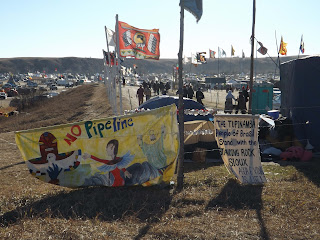
Photo by Julie Ferreira
The area around the central sacred fire is lined with canopies and folding camp chairs which are reserved for elders. Speakers address fellow native water protectors and their allies as "relatives." The amplified voices from the speakers tent serve as the communication backbone in a place where cellular service is rare. The day begins early before daybreak with the sound of the speaker urging all relatives to "get up, get up- this is why you're here, and this is what you came here for." We are encouraged to make it to the sunrise morning prayers around the sacred fire where elders sing songs of praise and encourage everyone to greet the day as human beings, with love and a determination to get it right.
Throughout the day new arrivals would stream into camp. Hundreds of individuals from the world over came to offer resources and help. The volunteer tent sent workers out to volunteer their help in all corners of the camp. Winterizing the camp and preparing spaces for winter were big on the list of needed activities while I was in camp. I chopped and stacked wood, helped in the kitchen, picked up trash, was trained in non-violent resistance, and participated in direct actions.
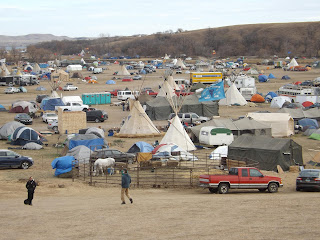
Photo by Julie Ferreira
At 9:00 every morning there was an orientation for those just arriving. The rules of camp were to remain in prayer and ceremony. No drugs, alcohol, or weapons were allowed, nor were the use of swear words. There is a policy of no use of cameras unless you are with the media, this is because if law enforcement were to confiscate your phone or camera others could be targeted and put at risk because of your pictures.
Indigenous people fighting to protect not just their land, but the land, is centuries old but it wasn't until I returned home from Standing Rock and was reflecting on my experiences that I realized that I had walked on the same land that Sitting Bull walked upon. The Standing Rock reservation is where Sitting Bull lived after he surrendered in 1881 because his people were on the brink of starvation after all the buffalo had been slaughtered. (An estimated 31,000,000 buffalo were killed between the years of 1868 and 1881.)
Our government has broken every treaty that's ever been made with the Lakota, Dakota, and Nakota people. The government has ignored tribal sovereignty, Indian law, and treaty rights. In 1958, the Army Corps constructed the Oahe Dam which destroyed more native land than any other public works project in the U.S. It took 21,026 acres of Sioux land. The project destroyed 90 percent of the timber land on the reservation as well as the most valuable rangeland, most of the cultivated areas, and the tribe's wild fruit and wildlife resources. With the damming of the Missouri River, life at Standing Rock's changed forever. It forced many native people to relocate, traditional spirituality waned, and poverty ravaged families. Luckily the struggle at Standing Rock has created a resurgence of the old ways in camp where the native language is spoken, the native horse culture is celebrated as youths ride on horseback, and people share their songs and dances, their prophecies, and histories.
The movement against the Dakota Access oil pipeline was begun by the youth on the Standing Rock reservation who see themselves as the 7th Generation — the generation that their elders have told stories about as a fulfillment of the prophesies of Black Elk.
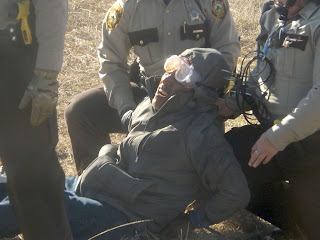
Photo by Julie Ferreira
In a vision about 150 years ago Black Elk, a Lakota Holy Man, saw different races represented by hoops and in Seven Generations he saw all hoops becoming one. The spiritual leaders and elders have prayed for the fulfillment of this prophesy and for the hoops of the nations to reunite. Black Elk's vision basically showed all the native peoples and tribes uniting along with people of all colors coming together in a sacred place to save the world.
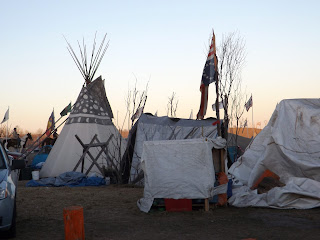
Photo by Julie Ferreira
I don't know if its because of this or not, but thousands of of Native Americans from more than 300 tribes spanning the continent have now joined with Standing Rock to stand against the pipeline. This has never ever happened before. Native nations have set aside their long held differences and resentments in order to defeat the controversialDAPL pipeline which will destroy ancestral burial grounds and could poison the water supply — not only for this sovereign nation, but also for 19 million Americans who live downstream and rely on the Missouri River for drinking water.
It was the Standing Rock native youth who first initiated major resistance to the pipeline. In order to hand over a petition calling for a full environmental impact study on the pipeline, they decided to run 500 miles from Cannonball, North Dakota to the district office of the United States Army Corps of Engineers in Omaha, Nebraska. Once the pipeline had been approved and construction was beginning, the Oceti Sakowin youth again began to run — but it this time it was the 2,000 miles from North Dakota to the doorstep of the Army Corps in Washington, D.C. — to meet with high-level government officials in hopes to halt the construction of the pipeline.
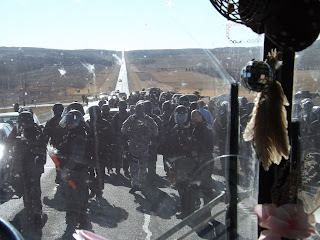
Photo by Julie Ferreira
The youth, with the support of elders, co-ordinated many of the direct actions and resistance in camp. Their creativity in the strategies they devised was nothing short of brilliant. Actions like trying to stop pipeline work by walking the easement and obstructing machines, creating ceremony alongside a railroad track which slowed down the train delivering materials for the drilling platform, to gathering in prayer and ceremony outside of the Bismarck Wells Fargo which is one of the money lenders, to going to the DAPL headquarters to pray and do ceremony, or organizing 600 people to form a human medicine wheel on the banks of the river for aerial photography. These were the actions taking place when I was in camp, but everyday these talented young people create new and different actions.
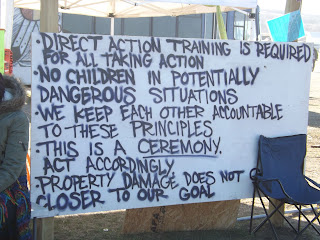
A barbed wire fence in front of the camp proclaimed to drivers along state Highway 1806: "We are unarmed." Even so, a non-law enforcement helicopter, rumored to be private security, frequently buzzed overhead. At night airplanes without lights circled above the camp. At the direct actions, the police were dressed in riot gear; they sported automatic rifles, mace, canisters of pepper spray, rifles with rubber bullets and had armored vehicles. Over militarization of the situation would be an understatement for a setting with unarmed civilians standing in prayer. It looked and felt more like Gaza than the United States.

While on the front lines I saw a span of generations- teenagers, young adults, adults, and elders who bring their appreciation and respect for Wni Wiconi- Water Is Life to the direct actions. They understand with all their hearts that there would be no life without water. Water plays an essential part in their ceremonies.
One thing is for sure, you can't drink oil. The water supply on the reservation is dependent on the Missouri River because the water table is too deep for it to be practical to drill wells. I was told by a generous reservation family that allowed me and others to bathe at their home that because the pipeline is just a half mile from the northern border of the reservation that their water supply would be contaminated within 45 minutes if there was ever an oil spill.
On Dec. 4th there was an announcement of a temporary halt on the pipeline called by the Army Corps of Engineers to potentially resolve the Tribe's concerns that the earlier permitting decision had not fully considered their interests and route alternatives. This was just after 4,000 veterans had arrived in Standing Rock. There were celebrations in the Water Protectors' camps, yet it seemed to people on the ground to be an orchestrated de-escalation. Those 4,000 vets added to an existing 10,000 people already in camp and this attracted big media coverage. The eyes of the world were focused on Standing Rock where riot ready law enforcement were facing the unarmed military personnel that had come with the mission to protect the right of the Water Protectors to peaceful protest. At the time it seemed that the powers that be could not afford the visual of armed military riot police and DAP'L mercenaries going up against unarmed military and civilians standing in prayer in a setting that often looked and felt more like Gaza than the United States.
On January 18th, the Department of the Army published the Notice of Intent to require an Environmental Impact Statement (EIS). The EIS was exactly what Water Protectors and tribal leaders were calling for. They wanted to make sure it fully took into consideration tribal treaty rights, natural resources, cultural and sacred places, socio-economical concerns, environmental justice, and the health and wellbeing of those downstream who rely on the Missouri River for drinking water.
The Department of the Army's Civil Works division announced it would accepted public comment until February 20th, 2017. The tribal leaders asked all interested citizens to please help the Water Protector movement by sending comments to ACOE to identify potential issues, concerns, and reasonable alternatives that should be considered in this EIS.
On February 7, 2017, the Trump Administration's Army Corps of Engineers cancelled the EIS and announced it would soon grant an easement to complete the Pipeline
Sierra Club is calling for people to send a message to the Army Corps demanding that the EIS be completed. To send a message, click here.
Meanwhile commritten comments on the EIS scope may be submitted via email to Mr. Gib Owen at gib.a.owen.civ@mail.mil. Use "NOI Comments, Dakota Access Pipeline Crossing" as the subject of the email. Postal service or hand delivery by advance arrangement may be addressed to Mr. Gib Owen, Office of the Assistant Secretary of the Army for Civil Works, 108 Army Pentagon, Washington, DC 20310-0108. Include submitter's name, return address, and "NOI Comments, Dakota Access Pipeline Crossing" on the first page.
Months ago there was a rumor that there had been a two and a half million dollar donation given for legal fees- turns out that is not true. Funds are still needed to coordinate the criminal and civil litigation efforts of the water protectors. If you feel drawn to helping the legal team who is supporting arrestees, you can mail a check payable to "Water Protector Legal Collective" to PO Box 69, 300 Collins Ave., Mandan, ND 58554-9998.
The latest news: